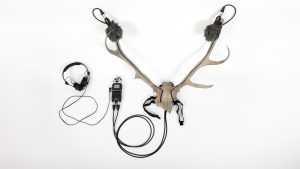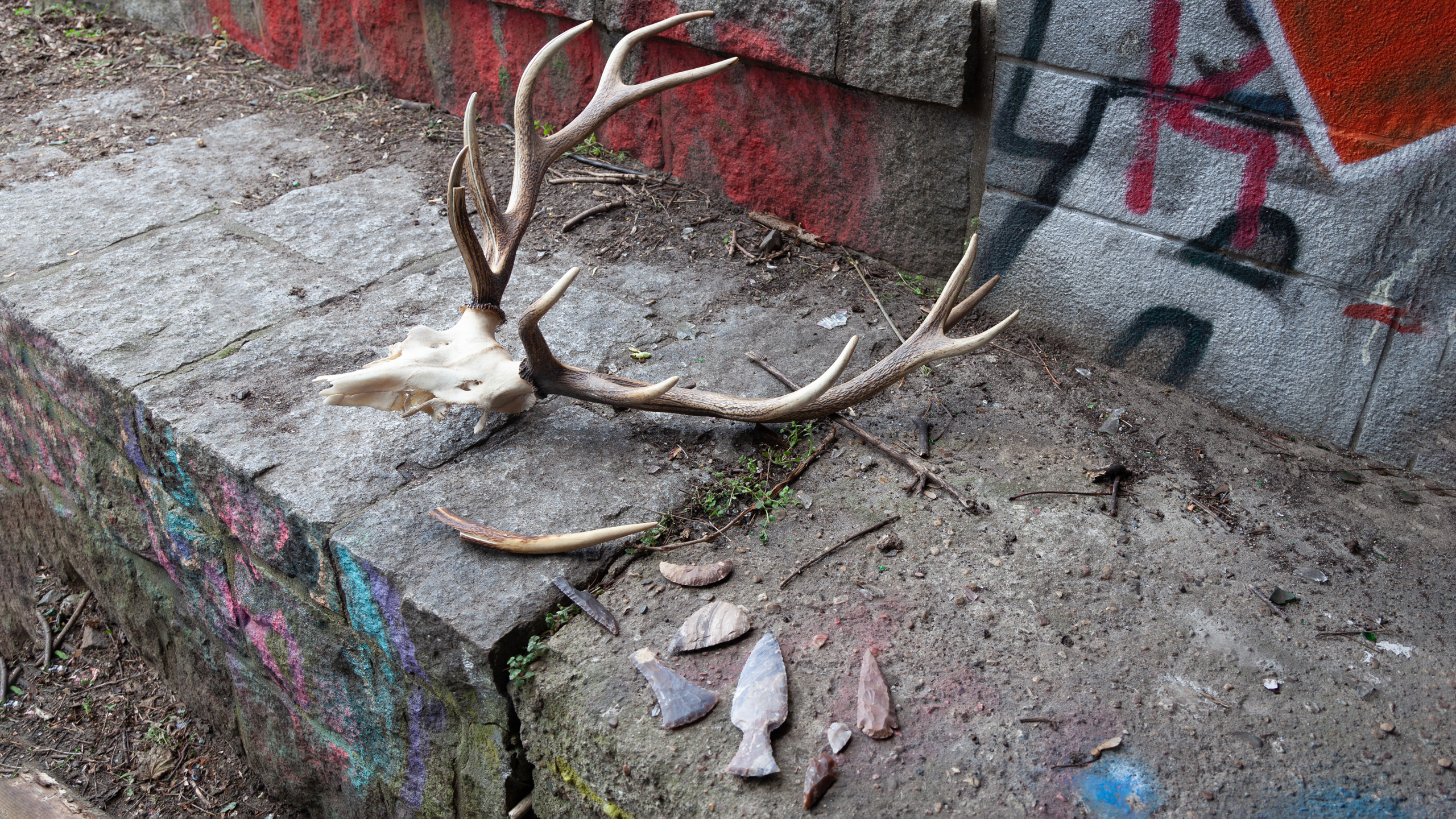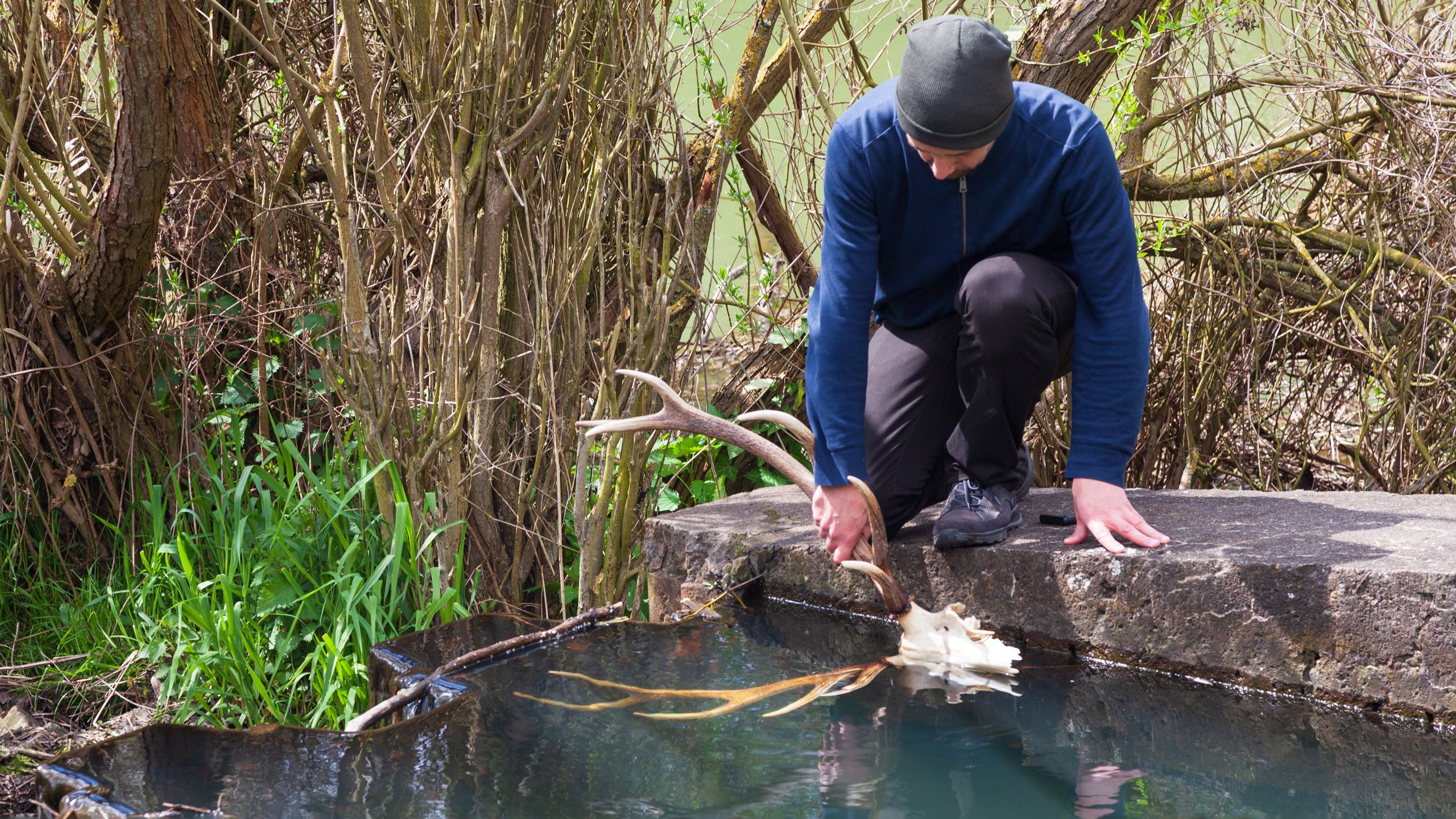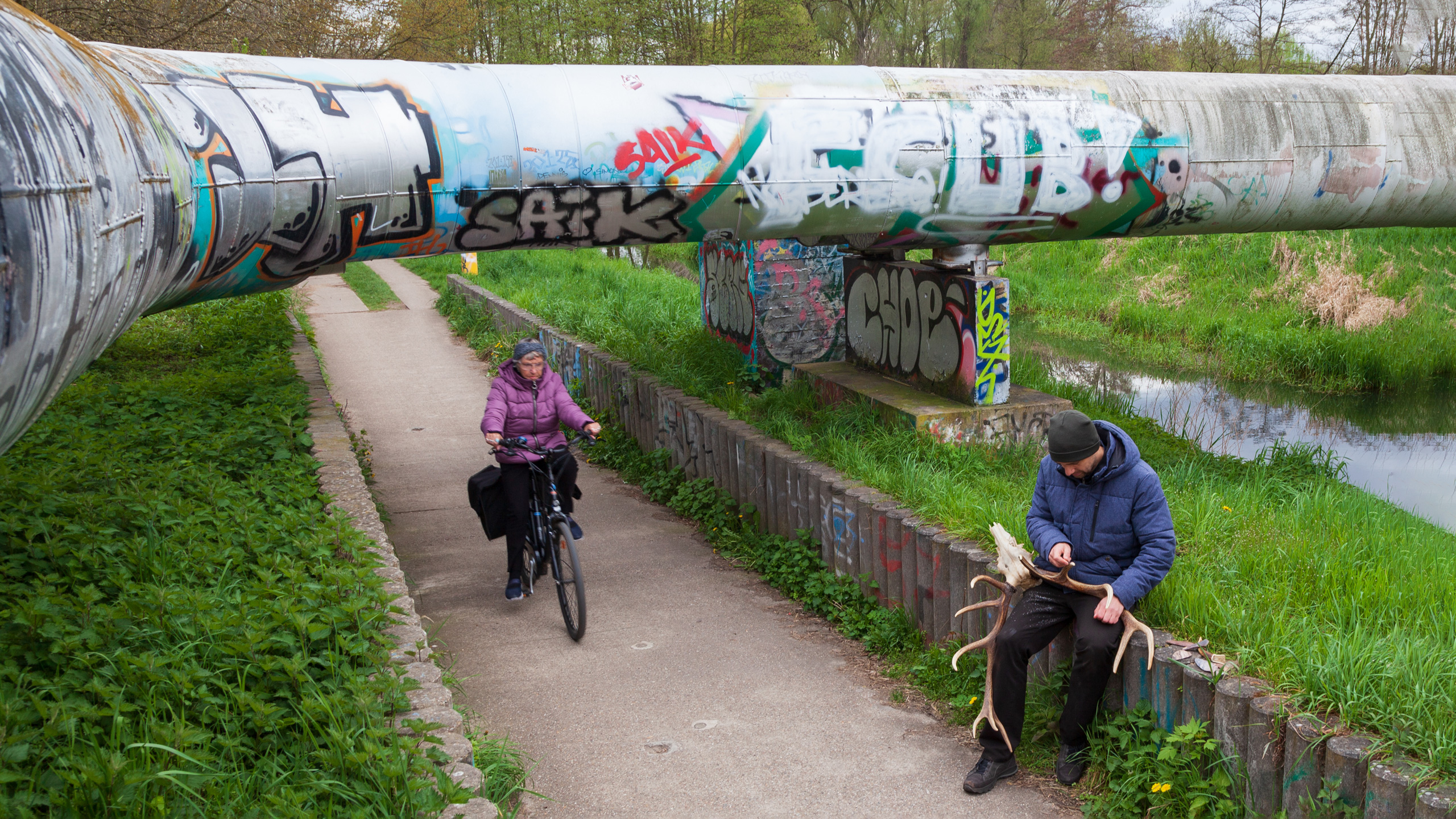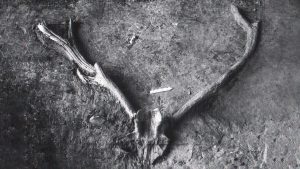A real antler of a red deer was used for the reproduction. The antler was split in half in the same way it was done in the stone age, using flint tools. The reason for the splitting was to reduce the overall weight of the headdress, allowing it to be worn. The on-site production of the replica was intended to introduce the project locally and to get in contact with passersby. It took place during several days along the Wuhle river. Since the large-scale urbanization of the old villages of Biesdorf, Marzahn and Hellersdorf, the Wuhle has been drastically redirected and pipelines, bridges and dams have transformed its landscape beyond recognition. Currently there are several re-naturalization projects underway aiming to rewild the Wuhle stream, turning into an ecological corridor, that runs along the plattenbau flats of Hellersdorf. Again, a new artificial landscape is created, giving us a glimpse of what it must have been like 10.000 years ago when the first humans settled here along the river.
